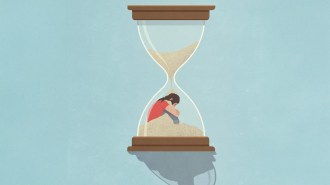Why scientists are expanding the definition of loneliness
A more holistic view could offer new ways to manage the feeling

Social isolation can result in loneliness. Other types of separation can too.
undrey/iStock/Getty Images Plus
For centuries, the Turkana pastoralists of northern Kenya have followed the water. Families once moved about 15 times a year in search of watering holes for their cows, donkeys, camels, goats and sheep.
But the Turkana people’s seasonal way of life has become precarious in recent decades. With drought and ongoing fighting across the region, many women and children stay put while men roam the landscape — often at their own peril. Violence has forced many families to flee for their lives at a moment’s notice. Separated from their livestock, these families eke out a living along the edges of cities or bide their time in displacement camps ringed by tightly woven fencing.
Friendships built on the exchange of livestock also disintegrate. “When no one has any animals, how can we help one another?” a Turkana woman asked anthropologist Ivy Pike, who has worked in the region for 25 years, during an interview.
The suffering within these communities is profound, says Pike, of the University of Arizona in Tucson. Unable to safely comb the landscape for medicinal plants, such as herbs to stem postpartum bleeding or curb fevers in children, women find it hard to fulfill their role as nurturers. Men’s identities, meanwhile, are often so bound up in owning livestock that the Turkana language has a word to describe a man without animals — ekebotonit.
“The loneliness of having no animals holds a particular place of distress that transcends the food and livelihood that livestock offer,” Pike and a colleague wrote in 2020 in Transcultural Psychiatry. “An ekebotonit … not only loses his sense of purpose and the companionship herds offer, but according to the Turkana, becomes erased — a man with no say in society.”
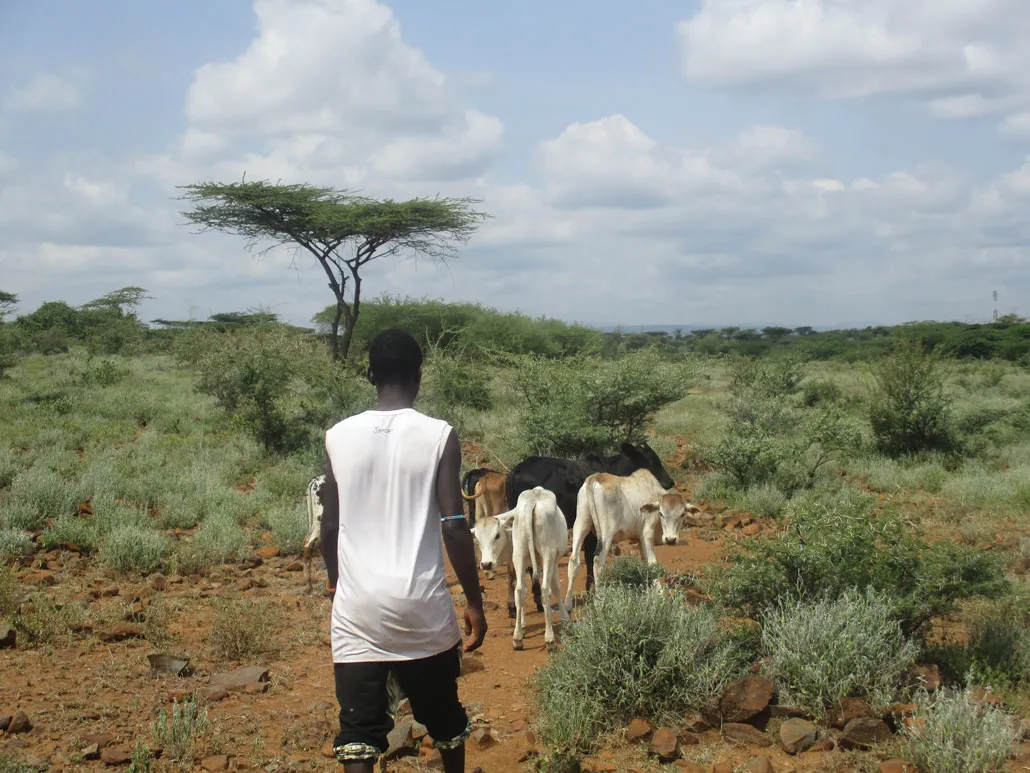
These experiences of loneliness among many Turkana people demonstrate how the feeling defies simple characterization — it’s more than social disconnection. That complexity is seen in cultures worldwide. In a study done in the United States during the COVID-19 pandemic lockdowns, for instance, many respondents attributed their loneliness to several factors that left them feeling disconnected. One woman missed going to the grocery store, anthropologist Michelle Parsons of Northern Arizona University in Flagstaff reported in 2022 in SSM-Mental Health. Another woman longed to browse the stacks at the library, a typically solitary activity.
Efforts to broaden the definition of loneliness to include a feeling of disconnect from animals, places, habits, rituals and even the weather have been gaining momentum across the social sciences. In October 2020, for instance, Parsons coauthored the introduction to a special issue on the anthropology of loneliness in Transcultural Psychiatry.
Getting a handle on the constituents of loneliness — and its flip side, belonging — is not just an academic pursuit; it’s a matter of public health, research suggests. In a May advisory, U.S. Surgeon General Vivek Murthy declared loneliness a public health epidemic, citing findings from numerous studies: Loneliness appears to increase a person’s risk of heart disease by 29 percent and risk of stroke by 32 percent. In older adults, chronic loneliness is associated with a 50 percent increase in the risk of developing dementia. Social isolation can increase the risk for premature death by 29 percent.
Broadening concepts of loneliness can help expand the toolkit of possible interventions, Parsons says.
Tethering people to the wider world could even help people recognize and address climate change, suggests geographer Sarah Wright of the University of Newcastle in Callaghan, Australia. This process begins, she says, by “building intentional relationships with more than human beings.”
Ancient forms of belonging
To understand belonging and by extension loneliness, Wright has looked to Indigenous communities. Though these communities span the globe and are comprised of myriad practices and languages, broadly speaking, they share a belief that well-being stems from harmony between people and the planet (SN: 9/23/23, p. 14).
Wright and colleagues recently studied the stories the Aboriginal Yolŋu people tell through ritualized songs known as songspirals. This ancient practice explores the connections among place, culture, people and the stories they tell. Wright’s team, including members of the Yolŋu community and drawing on the work of the Gay’wu Group of Women, published an analysis of one matriarch’s songspiral in 2022 in Qualitative Inquiry. In keeping with the Yolŋu world view, Bawaka Country, the tribe’s homeland in northern Australia, is listed as the lead author.
While lying on her deathbed, the matriarch began singing about her place, her sense of belonging, within a wide web of human and nonhuman relationships. In accordance with her people’s tradition, the matriarch saw this last journey as taking her to the sea; she envisioned herself as a whale. “I can see the saltwater carrying me, moving together with the current; carrying me further into the depths of the ocean, where the foundation of my bloodline lies.”
The matriarch built from an ancient script, one that spirals outward from a voiceless land, explain the authors. That song always starts something like: “At the beginning of time someone had to talk for the land, it was quiet, nothingness. And then it began with the sound from deep within the water, ‘Hmmm hmmm.’ That was the starting point.…”
From there, the matriarch’s song moves forward and backward across generations to anchor people in the broader arc of time, Wright says. The matriarch sings of swimming alongside her deceased grandmother; she sings of her daughters, her granddaughters and her great-granddaughters.
The song also anchors the Yolŋu people to their homeland by giving voice to whale migratory patterns, key fishing grounds and physical connections across the land and sea. The songspiral “maps the land from the sea point of view,” Wright says.
The matriarch’s songspiral shows how for the Yolŋu people, nonhuman relationships are as real as relationships with humans, Wright says. With such relationships, people feel a sense of belonging in the world. Without them, people feel lost.
As the matriarch’s daughter Merrkiyawuy explains in the paper, if the laws of balance between people and land, or country, are broken, “the spiral can come tumbling down and burst. That’s what we say, it will burst open and just float and you will be like a leaf floating in the air, nothing controlling you … if that spiral is burst open, then the songs disappear.”
Losing place — through migration, development, climate change or some other cause — can manifest as loneliness in Indigenous communities, other research suggests. For instance, in 1987, anthropologist Theresa O’Nell of the University of Oregon in Eugene began an 18-month study of depression among the Salish and Pend d’Oreille peoples living on the Flathead Reservation in Montana. But whenever O’Nell asked people if they had ever been depressed, they would invariably talk about loneliness.
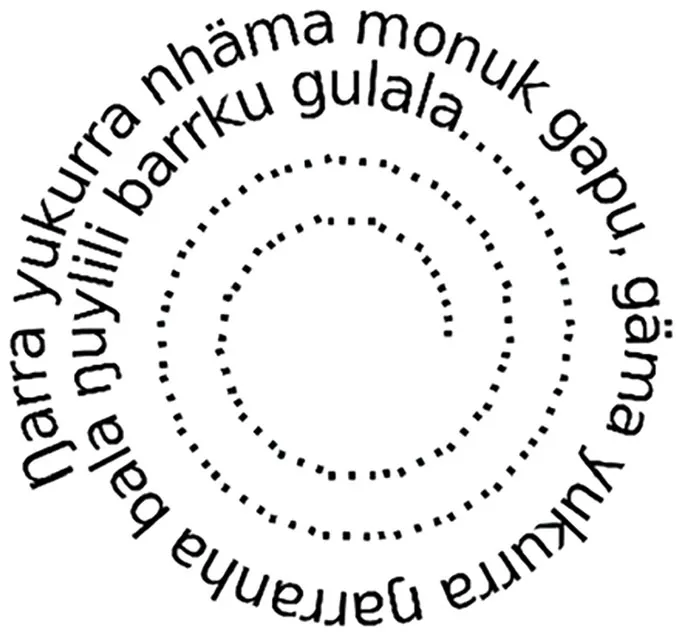
“Time after time, I asked about ‘depression,’ and time after time, I was told about ‘loneliness,’ ” O’Nell recounted in the 2004 issue of Culture, Medicine and Psychiatry. As an example, O’Nell cited “the loneliness of an elder lamenting the loss of a song that is no longer sung.”
O’Nell attributed this loneliness to several causes, including a feeling of exclusion from society, an existential feeling of separation between the self and a higher power, and bereavement over losing rituals and language. The Salish and Pend d’Oreille peoples, she observed, did not see their loneliness as pathological, but instead saw it as a natural response to the erosion of their way of life.
“Traditionally oriented Indian people are less susceptible to sadness and more susceptible to loneliness,” says Joseph P. Gone, a psychologist at Harvard University and a member of the Aaniiih-Gros Ventre tribal nation located in Montana.
If land loss is connected to loneliness, especially in Indigenous communities, then the feeling would be expected to grow as climate change wreaks havoc on people’s ancestral lands. (SN: 3/28/20, p. 6). For instance, the 2019–20 bushfires that scorched millions of hectares in Australia caused tremendous suffering for Aboriginal communities, researchers in Australia who worked with these communities wrote in 2020 for the Conversation, a nonprofit news organization: “For Aboriginal people … who live with the trauma of dispossession and neglect and now, the trauma of catastrophic fire, our grief is immeasurably different to that of non-Indigenous people.”
Longing for daily rituals
An emphasis on harmony between people and the planet appears less frequently in industrialized cultures, Wright says. “The fact that you can have a nourishing relationship with place has been invalidated.”
But as the pandemic illuminated, even in industrialized cultures, many people’s sense of belonging still hinges on connections to the more-than-human world. Rather than a connection between person and the landscape, though, these relationships frequently show up between people and aspects of the built environment.
This need for relationships with the built environment comes through in journal entries submitted to the Pandemic Journaling Project, Parsons says. This global initiative to gather people’s experiences of the historic health crisis amassed some 22,000 entries from 1,750 people from May 2020 to January 2022.
“The loneliness creeps up on me. It appears out of left field. The desire to just go and hang out with friends, go out to eat, even browse stacks at the library,” wrote Denise, described as a divorced Midwestern Black woman in her 60s.
The typical tools psychologists use to measure loneliness probably miss these feelings, Parsons reported in her 2022 article in SSM-Mental Health. She reached that conclusion after homing in on 35 U.S. journal writers, many with multiple entries, who used words containing the fragments “lone” or “isolat” in at least one entry. The journal writers also filled out a five-statement loneliness survey alongside their first entry and then every six weeks thereafter. Journal writers responded “yes,” “more or less” or “no” to statements such as: “I miss having people around me.” “There are plenty of people I can rely on when I have problems.” “There are enough people I feel close to.”
Even though many respondents reported feeling lonely in their entries, they still scored low on the loneliness survey, Parsons found. For instance, on the same date that Taylor, described as twentysomething, nonbinary single white person, wrote that they had “never been more lonely,” they scored a 0 on the loneliness survey.
Parsons attributes the discordance to limitations in the survey. The psychological survey used in the journaling project, called the De Jong Gierveld Loneliness Scale, and another widely used survey, the UCLA Loneliness Scale, both define loneliness as a form of social pain brought on by the felt absence of a social network or meaningful relationships.
By design, then, most loneliness surveys miss people’s connections to places, activities or even casual acquaintances. In the journaling project, people wrote about missing rituals and other practices, such as birthday celebrations, holidays, religious services and funerals, or missing places, such as the gym, grocery store, library and friends’ houses, Parsons notes. People also wrote about missing everyday encounters with others, the seemingly mundane interactions that can arise when people wander their communities.
Those feelings of loneliness show up in one of Taylor’s entries. They write: “Not only do I miss my friends, but I also miss strangers. I miss the random encounters I used to have with people on the street, in stores, at bars. I miss making a connection with someone and then going our own ways.”
The De Jong Gierveld Loneliness Scale is great at capturing a longing for the sort of deep, meaningful relationships that people typically associate with loneliness, but it misses other sorts of loneliness, Parsons says. “It’s not picking up place at all. It’s not picking up practices.”
Expanding the loneliness toolkit
Including the built environment in assessments of loneliness is not yet common. But architects, whose trade rests on understanding how people move about their communities, often intuitively think about how the design of the physical environment can worsen feelings of isolation or foster belonging.
“We usually think of loneliness as a singular situational, social or mental experience of being detached from place, domicile, or other human beings,” reads the opening line of the Finnish architect Juhani Pallasmaa’s chapter in the 2021 book of essays and lectures Loneliness and the Built Environment.
Many architects, including Pallasmaa, have found inspiration in the writings of German philosopher Martin Heidegger, who believed that dwellings provide a means of both shelter and self-expression. Architects thus design environments that imbue life with meaning, he argued.
Social scientists are starting to join architects in thinking about how the built environment can affect loneliness. In his recent public health advisory, Surgeon General Murthy outlined six pillars to advance social connection. In the first pillar, he recommended facilitating connection among people through better urban planning, such as providing people with easy access to green spaces and bolstering the reach of public transit.
Similarly, in January, a cross-disciplinary team of researchers in Australia and England, whose areas of expertise include urban planning, public health and sociology, identified several urban design features that have the potential to reduce loneliness. Those features include common spaces, walkability, public transit, housing design, sense of safety and access to natural spaces.
While the focus of such urban design projects often aim to get people together, there is growing awareness that connecting people with the natural world may also alleviate loneliness. “People can be socially isolated but still not feel lonely,” says Emily Rugel, an environmental epidemiologist at the University of Sydney. “They may find that ability to tap a biophilic connection and go out and view wildlife and walk among the trees. [That may be] enough to make them feel connected to the broader world. They don’t necessarily need interaction with friends or family members to do that.”
Consider, for instance, a small project in New Zealand that aims to alleviate loneliness, in part, by helping people reconnect to their extended families and ancestral lands. Members of one Māori subtribe, the Ngāti Whātua Ōrākei, developed a 30-home papakāinga, a type of communal Māori cohousing setup, on ancestral land. Completed in 2016, that project brought people together by connecting homes via shared lanes, community gardens and play spaces for children.
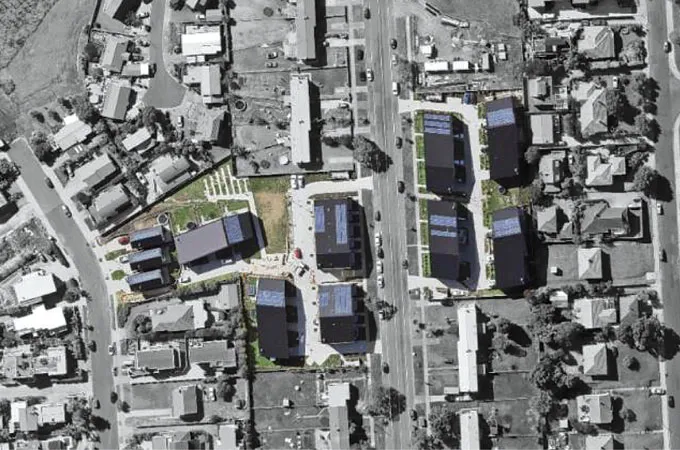
Developers wanted people to feel as if they were walking the same paths as their ancestors, researchers wrote in the 2022 issue of Wellbeing, Space and Society. They hoped that feeling would help residents feel rooted in their culture and the long arc of time. Even when building on ancestral lands is not possible, bringing often far-flung community members back together has the potential to revive languages and cultural practices, the authors note. But more research is needed to know if a return to the papakāinga reduces loneliness.
The bottom line is that expanding how we think about loneliness has the potential to expand the toolkit of possible interventions, Parsons says. “We can regulate our loneliness by not necessarily calling up a friend but by going out, going for a walk, or going to the library, or going and sitting in a coffee shop.”
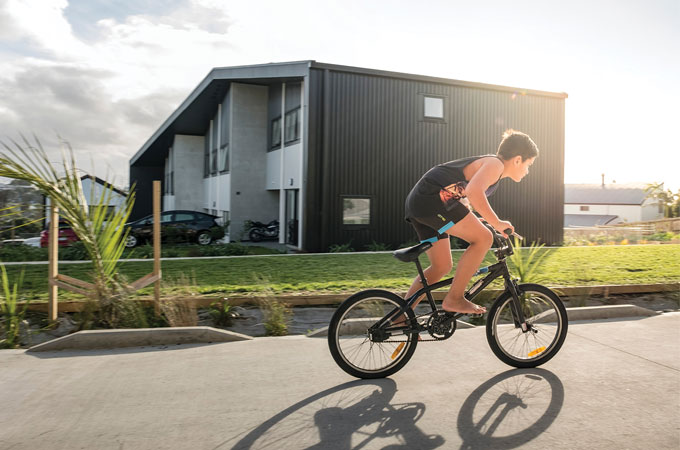
Loneliness and climate change
Many years ago, I moved to a small city in New England while several months pregnant. I knew no one except my husband and spent my lonely days wandering the woods behind my house. Once, after my baby was born, I strapped him into a carrier and scrambled down a steep embankment. There, at the edge of a lake, a log had lodged into the rocky shore. We would spend hours watching waves pummel the log’s rough bark. As I observed loons dive for fish in summer and heard waves shatter ice like glass in winter, my loneliness would briefly ebb.
I was reminded of this log after speaking with Sarah Wright about songspirals and why we should all cultivate intentional relationships with the natural world. I had never considered my relationship with the log particularly important, or even as a relationship at all. But Wright made me realize that in this new and unfamiliar place, the log had provided a haven. Her words also explained the sadness I felt over the years as the waves chipped away the log’s bark — a process accelerated no doubt by a lake that froze over less and less come winter.
There’s a word to describe what I was feeling. In the early 2000s, environmental philosopher Glenn Albrecht of the University of Sydney coined the term “solastalgia” to describe the pain or sickness a person experiences when natural or human-made disasters destroy their home. Etymologically, the word originates from both solace and desolation. Desolation, Albrecht wrote in 2007, has “meanings connected to abandonment and loneliness.” Solastalgia is also a play on nostalgia.
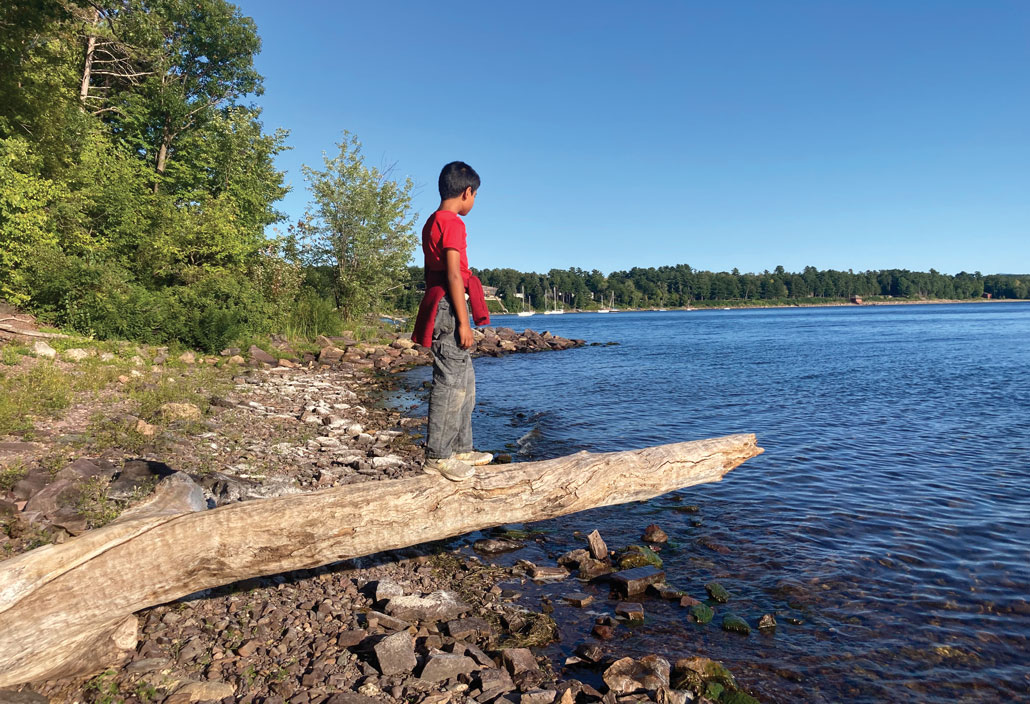
Albrecht felt compelled to create such a term after observing and interviewing over 50 people living in the Hunter Valley region north of Sydney, where there has been intensive mining. Residents expressed concerns over how mining was affecting their health and well-being. “The fact that you can see those huge mine heaps et cetera makes you think that sometime in the future there may be dreadful consequences for the water table movement in the valley,” a man named Leo said. A woman named Eve said, “When the coal is gone, the people of Singleton will be left with nothing but ‘the final void.’ ”
The residents’ experience is ironic, Albrecht noted. These people are descended from the colonizers who dispossessed Indigenous communities of their land. Now, this “second wave of colonization,” Albrecht wrote, “is leading to complete dispossession for some and solastalgia for those left behind.” In other words: desolation, abandonment and loneliness.
In recent years, related terms have emerged: ecoanxiety and climate grief (SN: 2/29/20, p. 22). Unlike solastalgia, though, researchers rarely connect these ideas to loneliness. That’s changing. In 2022, an online survey of over 3,000 German adults, for instance, showed that those who scored high in loneliness on the De Jong Gierveld Loneliness Scale also tended to score high in climate anxiety on a different scale.
These terms make clear that building a relationship with the nonhuman elements of our world is bittersweet in this time of rapid climate change. We come to love what we may well lose. Yet, absent these deep relationships, how can we care for the world we live in?
Last winter in my New England town, it didn’t snow until mid-February and the water around the log never froze. Those months of battering waves were hard on the log. When I trekked down to that rocky shore one muddy spring day, my two school-aged children in tow, the log was smooth to the touch and white as bone.
On a solo walk a few weeks later, I discovered that the log was gone. It had, after so many years of holding on, floated away.






